JUNE, 19 2025 / NATIONAL NEWS / Updated 14:00 IST
As tensions flare between Iran and Israel, India has swiftly launched a critical mission to rescue its citizens stuck in the conflict zone. Named Operation Sindhu, this high-stakes evacuation effort has already brought back over 100 Indian students from Iran. But unlike past rescue missions such as Operation Ganga or Operation Ajay, this one faces far more complex geopolitical and logistical challenges.
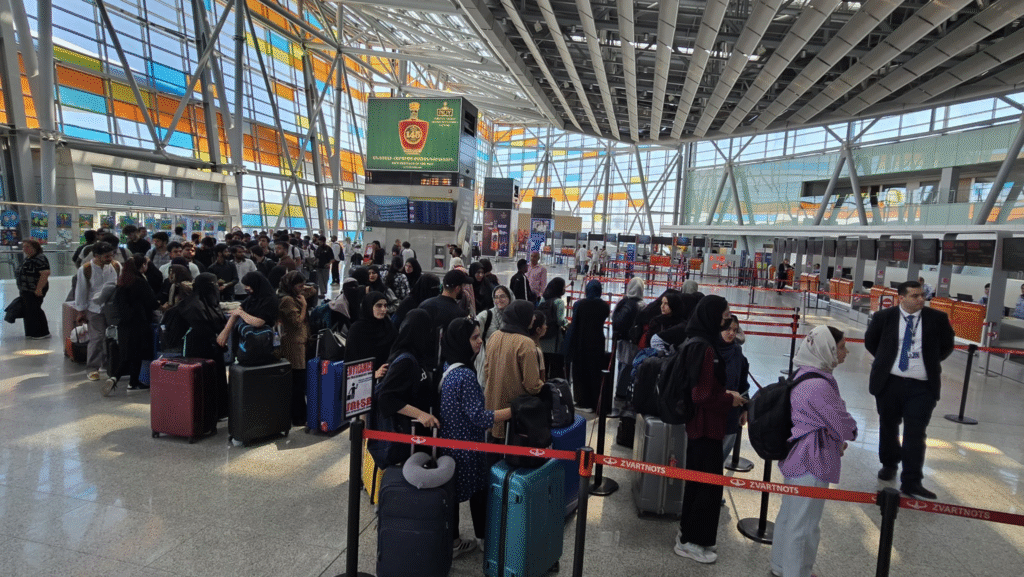
🆕 Latest Update: Evacuated Students Recall Horror in Iran Amid Operation Sindhu
NEW DELHI (June 19): “We saw missiles in the sky and heard bombs in our neighbourhood… We were petrified,” said Mir Khalif, an MBBS student from Iran, his voice trembling with fear as he stepped out of the Delhi airport. He was among the 110 Indian students rescued under Operation Sindhu, launched by the Indian government amid the ongoing Iran-Israel conflict.
The students, many of whom are from Jammu and Kashmir, were airlifted from Yerevan, Armenia, after being moved out of conflict-hit Iranian cities earlier this week. Their accounts reveal the extreme terror they experienced as missiles and aerial strikes rained down across Iran.
“It was a nightmare. Our building shook during the attacks. I hope no student has to go through what we did,” Khalif added.
Another student, Varta, described the critical situation in her neighbourhood and thanked the Indian Embassy and Armenian authorities for their swift action.
“The situation was quite critical. We were terrified when our area was bombed. But when the Indian officials reached our doorstep, we finally felt safe,” she said.
Ali Akbar, a student from Delhi, shared chilling visuals from their journey:
“We saw a missile and a drone fall from the sky while we were travelling in a bus. Tehran is in ruins. The news isn’t exaggerating—it’s a full-blown war zone.”
The students were warmly received at Delhi airport by Minister of State for External Affairs Kirti Vardhan Singh, who posted on X:
“Warmly welcomed home the first group of 110 Indian nationals evacuated from Iran as part of #OperationSindhu, reaffirming India’s steadfast commitment to the safety and well-being of its citizens abroad.”
In his interaction with the press, Singh confirmed that the evacuation mission is ongoing:
“Another flight is ready to leave today. We are also coordinating evacuations through Turkmenistan. Our missions are operating 24×7 helplines. As the situation develops, more flights will follow.”
Families Reunited — and Still Waiting
At the Delhi airport, scenes of joy and relief unfolded as parents embraced their children after days of anxious waiting.
Haider Ali, father of MBBS student Maaz Haider, expressed his gratitude but voiced concern for those still stranded:
“We are happy and grateful, but our hearts are still heavy. Many students are still in Tehran. We urge the government to bring them back quickly.”
Parvez Alam from Bulandshahr, whose son was studying in Urmia, added:
“The stress was unbearable. But the Indian authorities ensured the students reached Armenia safely. We thank the government and the embassy for this.”
The Jammu and Kashmir Students’ Association also issued a statement thanking Prime Minister Narendra Modi and External Affairs Minister S. Jaishankar for launching Operation Sindhu and prioritizing the safety of Kashmiri students.
What is Operation Sindhu?
Operation Sindhu is a strategic evacuation mission initiated by the Indian government to rescue Indian nationals trapped in Iran as the country edges toward full-blown conflict with Israel.
The operation kicked off amid escalating hostilities in West Asia. On June 13, 2025, Israel launched Operation Rising Lion, a series of precision strikes targeting Iran’s nuclear infrastructure. In retaliation, Iran responded with Operation True Promise 3, firing ballistic missiles at Israeli targets. The danger zone expanded rapidly, triggering India to act fast.
On June 19, the first batch of evacuees—110 Indian students—landed in New Delhi from Yerevan, Armenia, under Operation Sindhu.
The flight carrying 110 Indian students evacuated from northern Iran landed in New Delhi in the wee hours today.
— All India Radio News (@airnewsalerts) June 19, 2025
India has launched #OperationSindhu to evacuate its nationals from Iran in view of the deteriorating situation due to the ongoing conflict between Iran and Israel.… pic.twitter.com/DNVosNDqFT
READ MORE: Israel Iran War Live Updates: India Evacuates Students as Israel Warns Strike Near Arak Nuclear Site
First Phase of Operation Sindhu: A Road to Safety
The first phase of Operation Sindhu focused on students residing in the northern provinces of Iran. With air travel unsafe due to ongoing military operations, the Indian government worked with Armenian authorities to establish a safe land corridor.
These students were transported by road to Yerevan, the capital of Armenia, in a 2-day-long journey starting June 17.
From Yerevan, a special evacuation flight arranged by the Indian Ministry of External Affairs took off on June 18 at 2:55 PM and landed safely in New Delhi in the early hours of June 19.
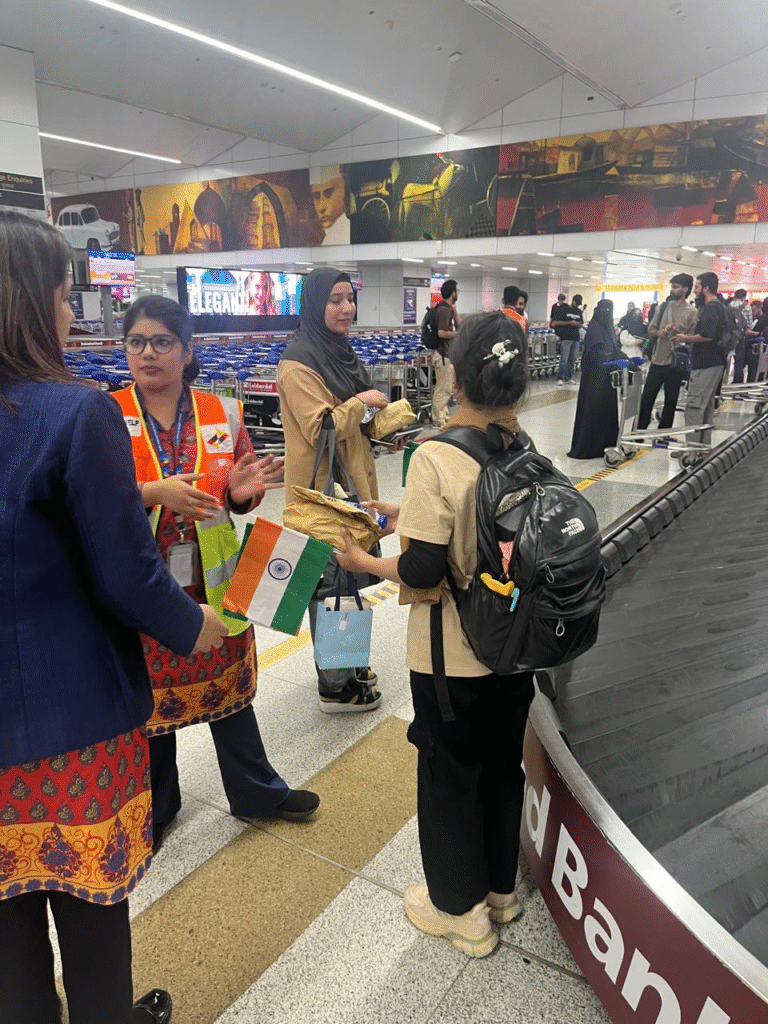
MoS Welcomes Evacuees in Delhi
Minister of State for External Affairs, K.V. Singh, personally received the students at the Delhi airport, tweeting:
“110 Indian students evacuated from Iran under #OperationSindhu have safely arrived in New Delhi. The Government of 🇮🇳 remains committed to the safety of all Indian nationals.”
This moment marked the beginning of what promises to be a multi-phase evacuation effort.
Why is Operation Sindhu More Complex than Operation Ganga?
Comparisons between Operation Sindhu and Operation Ganga—the massive 2022 evacuation from Ukraine—are inevitable. But the two are vastly different in scale and difficulty.
1. Geopolitical Geography:
- Ukraine is surrounded by friendly European nations like Poland and Hungary, allowing multiple safe routes.
- Iran, however, is bordered by Pakistan, Afghanistan, and Azerbaijan, each posing their own security or diplomatic challenges for India.
2. Airspace Restrictions:
- Pakistan has closed its airspace to Indian flights since Operation Sindoor in 2023, ruling out any western evacuation routes.
- Afghanistan remains highly unstable.
- Azerbaijan, an ally of Pakistan, is not a favorable choice.
3. The Armenia Advantage:
- Armenia is India’s closest diplomatic ally in the region.
- It is politically neutral in the Israel-Iran conflict.
- It’s located close to the northern provinces of Iran where many Indian students are studying.
Hence, Armenia became the primary corridor of escape under Operation Sindhu.
MEA’s Helpline and Advisory
The Ministry of External Affairs (MEA) has set up a 24/7 Control Room in New Delhi and has advised all Indian nationals in Iran to:
- Stay connected with the Indian Embassy in Tehran.
- Avoid unnecessary travel.
- Follow Embassy’s social media handles for real-time updates.
Multiple emergency helplines have also been activated to provide support, counselling, and coordination.
Evacuees Raise Concern Over Bus Conditions
While the evacuation flight was smooth, some students expressed dissatisfaction with the bus arrangements from Delhi to Jammu & Kashmir.
“The buses were not in a stable condition,” said Shaikh Afsa, a student from Kashmir.
Following backlash, the Chief Minister of J&K, Omar Abdullah, issued a directive to replace the current buses with deluxe ones and assigned the Resident Commissioner to ensure coordination with the J&K State Road Transport Corporation (JKRTC).
Over 4,000 Indians in Iran – Who’s Next?
An estimated 4,000 Indian nationals, including 2,000+ students, remain in Iran. The Indian Embassy and MEA are working to:
- Identify and locate all citizens.
- Assess region-wise threat levels.
- Plan further land-based evacuations through Armenia or possibly Turkmenistan.
Next batches are expected to be evacuated based on threat proximity and medical vulnerabilities.
India’s History of Rescues: From Kuwait to Ukraine
India has always prioritized the safety of its citizens abroad. Some of the notable evacuation operations include:
✅ Operation Ganga (2022):

- Evacuated over 18,000 Indians from war-hit Ukraine.
- Used 90+ flights via Romania, Hungary, and Poland.
✅ Operation Ajay (2023):
- Evacuated Indian citizens from Israel during the conflict with Hamas.
✅ Operation Raahat (2015):
- 6,710 people (including foreigners) rescued from Yemen.
✅ Operation Safe Homecoming (2011):
- More than 15,000 Indians evacuated from Libya during the civil war.
✅ Kuwait Airlift (1990):
- Over 1.75 lakh Indians airlifted from Iraq-Kuwait.
- Entered Guinness Book for the largest civilian airlift by any airline.
🌍 What Makes Operation Sindhu Unique?
- Complex geopolitical web – Iran’s geographical and diplomatic positioning makes it far harder than past rescues.
- Land-to-air strategy – First time India has combined road evacuations through a third country followed by an international airlift.
- Real-time war scenario – Unlike Ukraine’s western safe zones, Iran is surrounded by high-risk zones with active missile threats.
- Limited evacuation routes – India has fewer allies in this region and limited air corridor access.
🇮🇳 What’s Next in Operation Sindhu?
- Next batches of evacuees could include medical patients, families, and workers from Iranian industries.
- Evacuation coordination centers are being planned in Yerevan and Tehran.
- Talks are ongoing with Turkmenistan to open another exit route in case the Armenian corridor is compromised.
Final Word
Operation Sindhu isn’t just a rescue—it’s a reminder of India’s unwavering commitment to its citizens, no matter where they are. With thousands still in Iran and the Middle East on the edge of full-scale war, the mission is far from over.
As India continues to fly its people back home, Operation Sindhu could soon become one of the most challenging and diplomatically complex evacuations in modern history.
Stay tuned to Taaza Wire for real-time updates on Operation Sindhu, and follow us on social media for live alerts.
For more updates on Operation Sindhu and major global evacuations, stay connected with Taaza Wire — bringing truth, tension, and timely updates straight to your screen.
FAQs
What is Operation Sindhu by the Indian government?
Operation Sindhu is a special evacuation mission launched by the Indian government in June 2025 to rescue Indian nationals, primarily students, stranded in Iran due to escalating military tensions between Israel and Iran.
How many Indians have been rescued under Operation Sindhu so far?
In the first phase, 110 Indian students were safely evacuated from Iran via Armenia and landed in New Delhi on June 19, 2025. Further evacuation efforts are ongoing.
Why is the evacuation from Iran more difficult than Ukraine?
Unlike Ukraine, Iran shares borders with countries that are either unstable (like Afghanistan), diplomatically strained with India (like Pakistan), or geopolitically unfavorable (like Azerbaijan). This limits India’s evacuation routes, making Operation Sindhu more challenging.
What is the route used in Operation Sindhu?
Indian students in northern Iran were transported by road to Yerevan, Armenia. From there, a special flight arranged by the Ministry of External Affairs flew them to New Delhi.
How many Indians are currently in Iran?
Approximately 4,000 Indian nationals are living in Iran, with around half of them being students. The Indian government is working to ensure the safe return of all those who wish to come back.
Which ministry is managing Operation Sindhu?
Operation Sindhu is being coordinated by the Ministry of External Affairs (MEA) of India, in collaboration with the Indian Embassy in Tehran and Armenian authorities.
What helpline numbers are available for Indians in Iran?
The MEA has set up a 24/7 Control Room in New Delhi and has shared emergency helpline numbers through the Indian Embassy’s social media platforms for all stranded citizens in Iran.
Is there any advisory for Indians in Iran?
Yes, the Indian Embassy in Iran has advised all nationals to stay connected, avoid unnecessary movement, and follow official communication channels for real-time updates.
Are future evacuations under Operation Sindhu planned?
Yes, further phases of Operation Sindhu are expected as the Indian government assesses the situation and prioritizes the evacuation of vulnerable groups and families still in Iran.
What were the issues faced by students after reaching India?
Some students raised concerns about the quality of buses arranged to take them from Delhi to Jammu & Kashmir. The J&K government has responded and is now arranging deluxe buses for their safe onward travel.
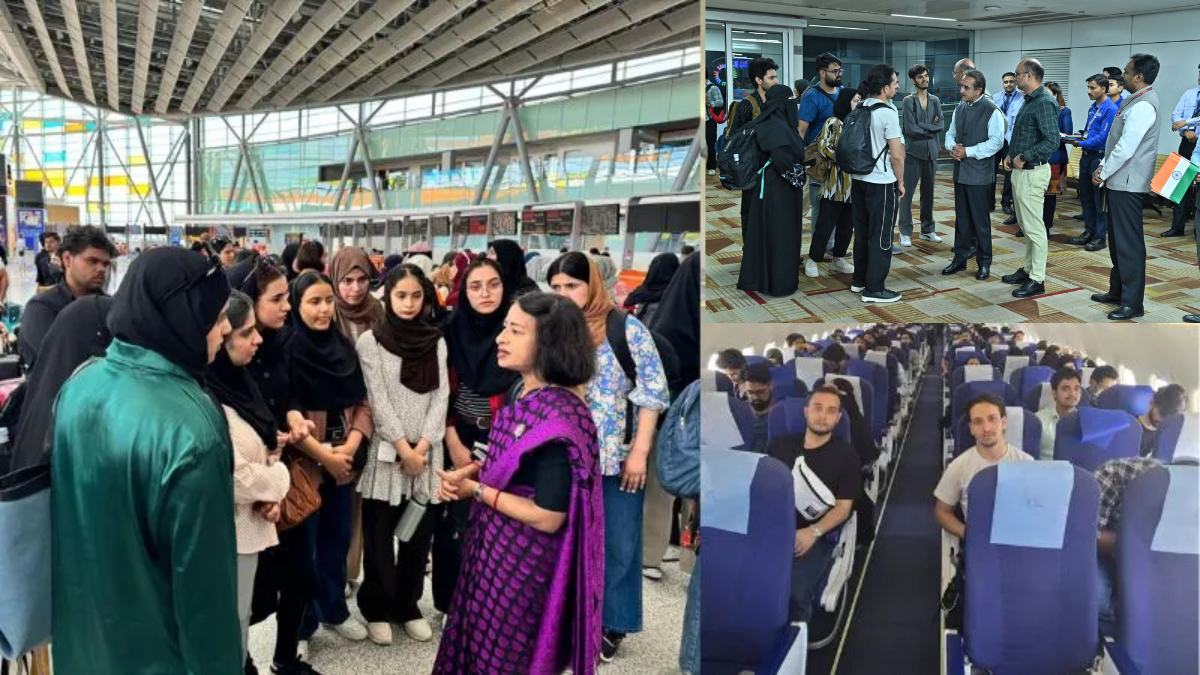
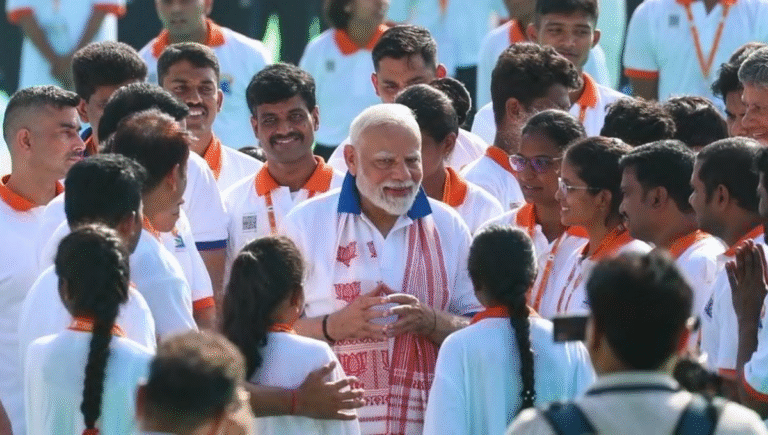
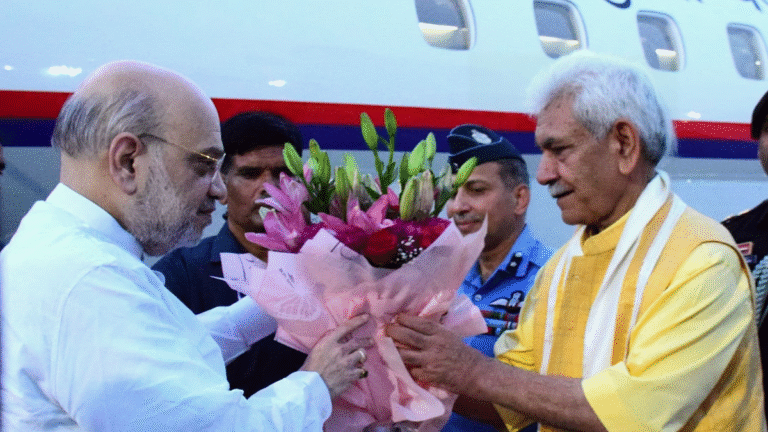

[…] Operation Sindhu: Inside India’s High-Stakes Rescue from Iran Amid Israel-Iran War Tensions […]